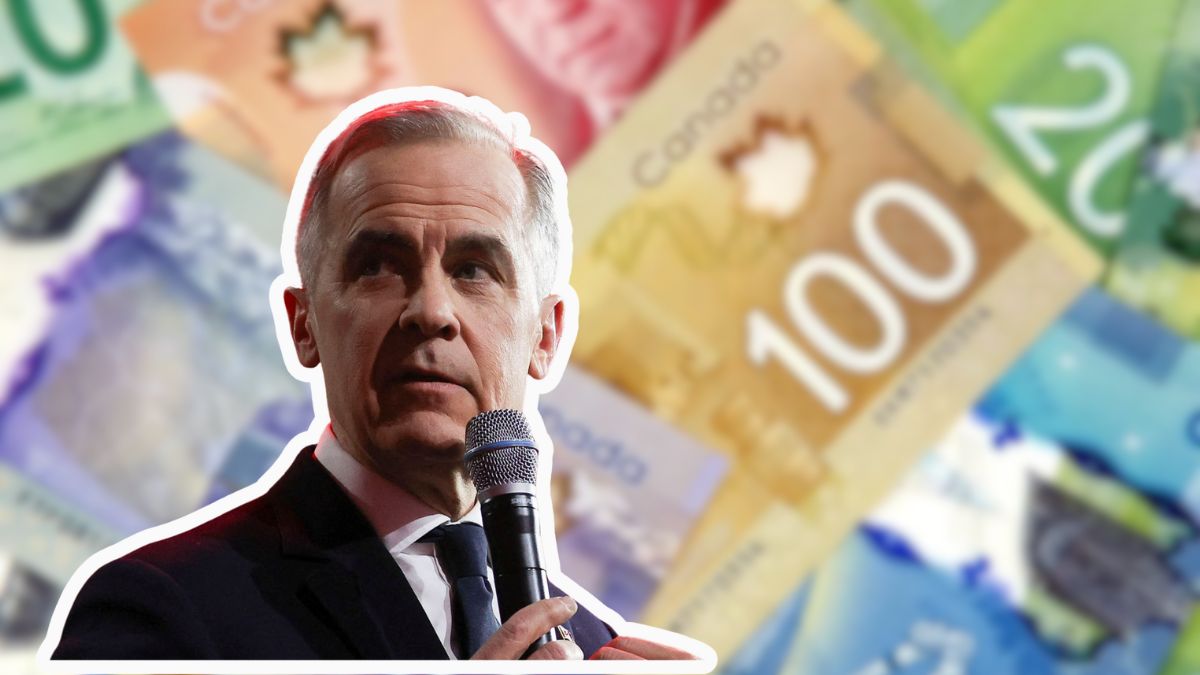As inflation continues to strain Canadian households, the federal government is moving forward with an increase to one of its most important affordability measures: the Canada Carbon Rebate (CCR). Starting in 2025, qualifying households could see an additional \$500 per year, a boost designed to offset higher costs for essentials like groceries, gas, and home heating.
For millions of Canadians, this rebate—paid out quarterly—has become a financial lifeline. And with the extra top-up, families in provinces under the federal carbon pricing system could pocket more than ever before. Here’s everything you need to know about the 2025 CCR boost: who qualifies, how much you’ll get, when payments arrive, and why this program matters in the broader fight against climate change and rising living costs.
What Is the Canada Carbon Rebate?
The Canada Carbon Rebate is a quarterly, tax-free payment that puts money back in the pockets of households facing higher costs because of the federal carbon pricing system.
Previously known as the Climate Action Incentive Payment (CAIP), the program was renamed in 2023 to better reflect its purpose: to directly return carbon tax revenues to Canadians. While companies and fuel distributors pay the carbon tax, the proceeds flow back to residents in provinces covered by the federal plan.
In short, while carbon pricing makes gasoline, natural gas, and other fuels more expensive, the rebate ensures most households—especially low- and middle-income families—get back more money than they pay in carbon costs.
What’s New in 2025: The \$500 Boost
The headline change for 2025 is the proposed \$500 annual increase to CCR payments. This boost responds to two mounting pressures:
- Persistent inflation: Rising prices for food, fuel, and utilities continue to squeeze household budgets.
- Higher carbon prices: As Canada’s carbon tax rises gradually each year, the rebate is adjusted to ensure households remain protected.
With the extra \$500, many families could see their annual CCR support grow by 10–20% compared to 2024.
How CCR Payments Work
Quarterly Schedule
The CCR is issued four times a year on a fixed schedule:
- January 15, 2025
- April 15, 2025
- July 15, 2025
- October 15, 2025
Payments are sent automatically by the Canada Revenue Agency (CRA), either through direct deposit (fastest) or by mailed cheque (slower).
No Application Required
As long as you’ve filed your taxes, you’re automatically assessed for eligibility. This means there’s no separate application process—filing taxes on time is the only requirement.
Who Is Eligible for the Carbon Rebate?
Not every Canadian qualifies. The CCR is restricted to residents in provinces where the federal carbon pricing system applies.
Eligible Provinces
- Alberta
- Saskatchewan
- Manitoba
- Ontario
- New Brunswick
- Nova Scotia
- Prince Edward Island
- Newfoundland and Labrador
Residents of British Columbia, Quebec, and the territories do not receive CCR because those regions have their own provincial or territorial carbon pricing systems.
Basic Eligibility Rules
To qualify, you must:
- Be a Canadian resident on the first day of the payment month.
- Be at least 19 years old (unless you’re married, in a common-law partnership, or a parent).
- File your annual tax return with the CRA.
Only one payment is made per household, typically to the spouse or partner who filed taxes first.
How Much Will You Get in 2025?
The amount you receive depends on:
- Your province of residence
- The size of your household
- Whether you live in a rural area (rural residents get a 20% top-up)
Example: Alberta in 2025
| Household Member | Quarterly Amount | Annual Total |
|---|---|---|
| Single Adult | \$225 | \$900 |
| Spouse/Partner | \$112.50 | \$450 |
| Each Child (under 19) | \$56.25 | \$225 |
For a family of four in rural Alberta, the total rebate could reach:
- Base: \$450 + \$450 + \$225 + \$225 = \$1,350 annually
- Rural 20% top-up: +\$270
- Total: \$1,620 annually
With the \$500 boost, that rises to \$2,120 annually—a meaningful cushion against rising costs.
Comparing Provinces: What Families Could Receive
Estimated 2025 CCR Annual Payments (Family of Four, Urban)
- Alberta: ~\$1,620 (with boost: ~\$2,120)
- Saskatchewan: ~\$1,450 (with boost: ~\$1,950)
- Manitoba: ~\$1,200 (with boost: ~\$1,700)
- Ontario: ~\$1,050 (with boost: ~\$1,550)
- Atlantic Provinces: ~\$900–\$1,000 (with boost: ~\$1,400–\$1,500)
Rural families add 20% more to these amounts.
Why File Taxes Early?
The most common reason Canadians miss their CCR payment is late tax filing. Since CRA uses your tax return to determine eligibility, filing late means:
- Your rebate will be delayed.
- You might miss a quarterly cycle entirely.
To avoid disruptions, file your 2024 tax return by April 30, 2025.
How the CCR Helps with Inflation
For many Canadians, every extra dollar counts. Here’s where CCR money often goes:
- Heating and electricity bills – especially in winter months.
- Groceries and transportation costs – areas hit hardest by inflation.
- Childcare and school expenses – giving families breathing room.
A single parent in Ontario might receive around \$1,000 a year with the new boost. For a family of four in rural Saskatchewan, the total could surpass \$2,000 annually—enough to cover several months of utility bills or grocery runs.
Economic and Environmental Impact
The CCR is unique because it marries economic relief with climate policy.
- Economically, it provides direct, tax-free cash to households.
- Environmentally, it supports Canada’s goal of reducing carbon emissions by putting a price on pollution.
Most economists agree that carbon pricing is effective at driving down emissions. But without a rebate, it would be politically and financially unpopular. The CCR solves that tension—Canadians keep more money while industry shoulders the cost of pollution.
How to Ensure You Don’t Miss Your CCR Payment
- File your taxes on time – the most important step.
- Update your CRA banking details – direct deposit is faster and safer.
- Check your CRA “My Account” – track payment dates and amounts.
- Report life changes – update CRA if you move, get married, or have children.
Critics and Supporters: The Debate Around CCR
The CCR isn’t without controversy. Critics argue that:
- It doesn’t fully offset the higher cost of carbon pricing for large families or frequent drivers.
- Wealthier households benefit less since the rebate doesn’t scale with income.
- Administrative costs still exist despite automation.
Supporters counter that:
- 80% of households get back more than they pay in carbon taxes.
- Rural supplements fairly recognize higher energy needs.
- The program is a rare example of climate policy with direct economic benefits.
Looking Ahead: Will CCR Grow Beyond 2025?
With carbon prices scheduled to rise gradually through 2030, the CCR will continue adjusting upward. The \$500 boost in 2025 is likely just the beginning, as Ottawa seeks to cushion households from ongoing affordability challenges while staying committed to climate goals.
Future debates may center on:
- Expanding eligibility to more provinces.
- Increasing rural supplements further.
- Adjusting the rebate more frequently to match inflation.
5 SEO-Friendly FAQs
Q1: Who qualifies for the Canada Carbon Rebate in 2025?
Residents of Alberta, Saskatchewan, Manitoba, Ontario, and the Atlantic provinces under the federal carbon pricing system qualify, provided they file taxes and meet basic residency rules.
Q2: How much is the 2025 CCR worth?
Amounts vary by province, household size, and rural status, but the 2025 boost adds about \$500 more annually per household.
Q3: Do I need to apply for the CCR?
No. Payments are automatic if you file your tax return on time.
Q4: When are the 2025 CCR payments issued?
Payments arrive quarterly on January 15, April 15, July 15, and October 15.
Q5: What if I move provinces during the year?
Your eligibility and payment amounts are based on the province where you live as of the first day of each payment month.











